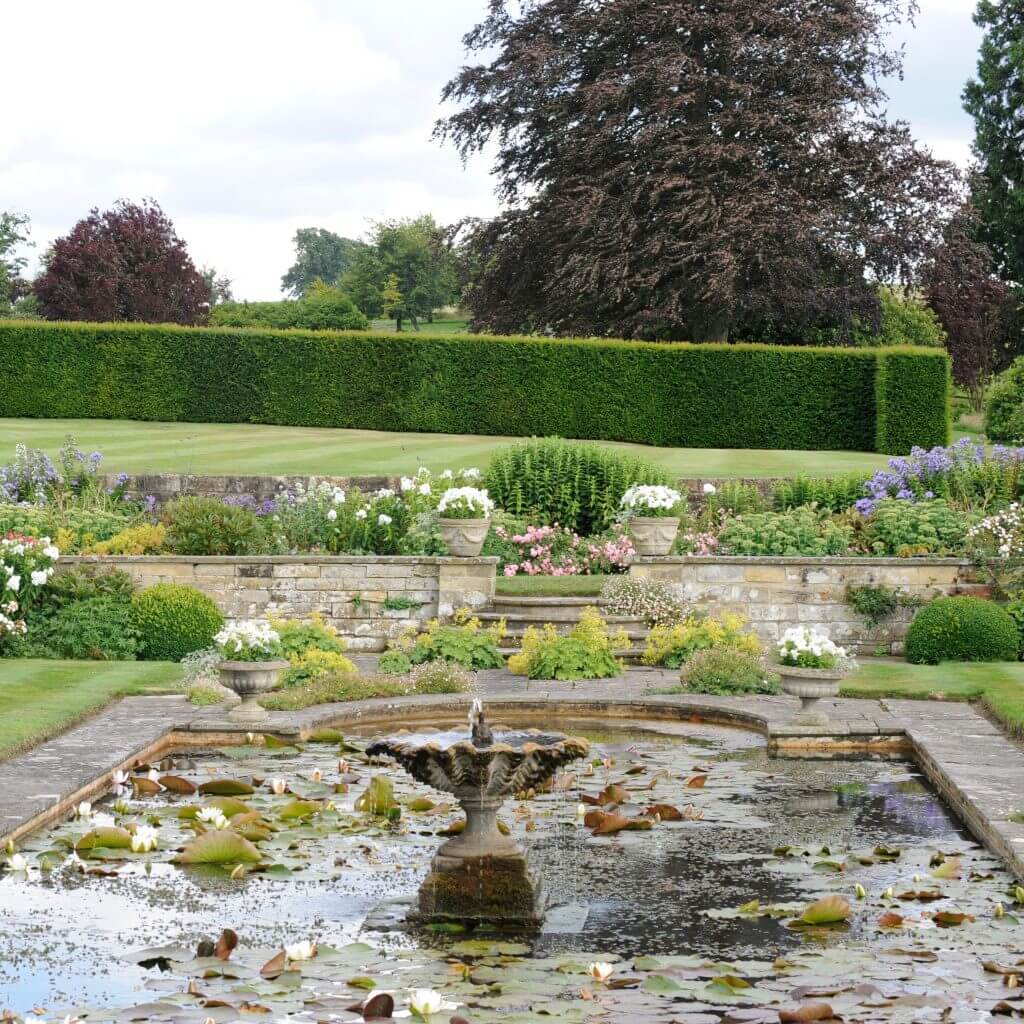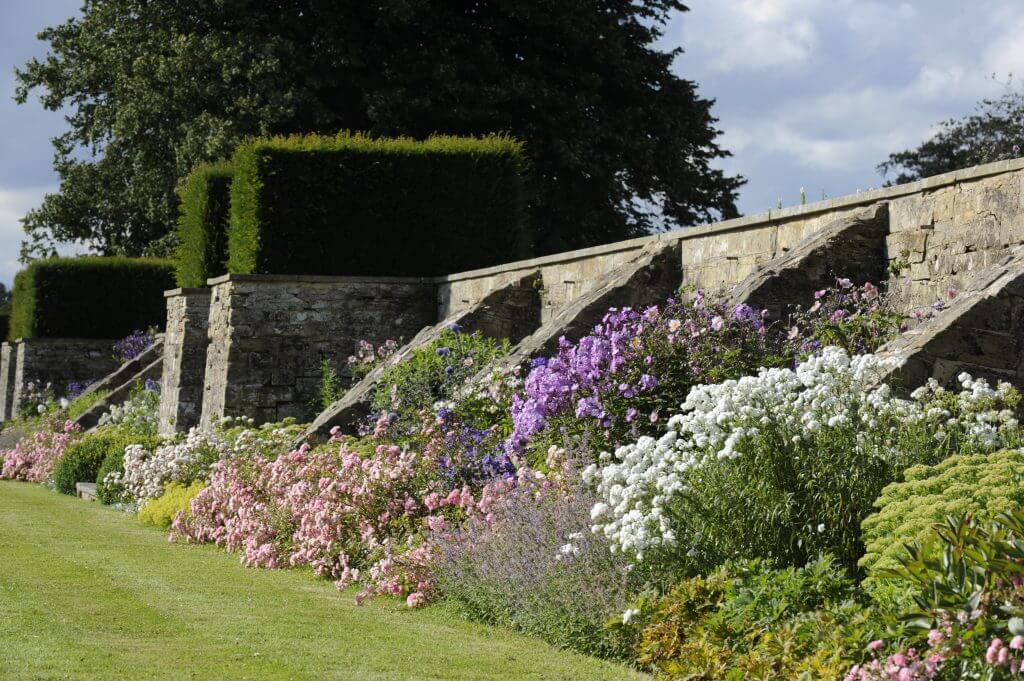The park was laid out by Humphry Repton in the eighteenth century, and in the early twentieth century, Sir Edwin Lutyens was commissioned to add a large wing and, with some planting by Gertrude Jekyll, a formal terraced garden, the greater park of the Lutyens wing was largely taken down by the 10th Earl but the gardens remain and are Lady De La Warr’s particular joy.
Perhaps the most famous part of the Estate, however, is 100 Acre Wood immortalised by A.A. Milne in Winnie the Pooh; Milne lived in Hartfield, one of the villages on the Buckhurst Estate, and Lord De La Warr’s father remembered playing with Christopher Robin and his famous bear.
Upon his death, Sir Thomas’ son, the 2nd Earl reduced his father’s original plans but still built a considerable mansion where the present house stands. He did not, however, include a formal garden. It was Arabella, Duchess of Dorset, who can be credited for the beginnings of the current gardens. She commissioned Repton to produce a “Red Book” containing designs for a formal park and gardens, which was unfortunately sold after the death of the 8th Earl in the Great War.
Duchess Arabella followed the plans set out in the Red Book and commissioned a lakeside walk of shrubs and ornamental trees, complete with a boathouse from Lewis Kennedy, famous for designing the gardens at Malmaison for the Empress Josephine. Kennedy, at this time, had retired to the nearby Tunbridge Wells and Buckhurst was the only place on which he would work in England.
The death of the last Duke whilst hunting in Ireland split the Sackville family between Buckhurst and Knole. An unclear will, written by the Duke’s heiress sister (who was married to the Earl De La Warr) and a subsequent law suit directed Knole to the Duke’s second son with Buckhurst, the older property, going to his older son and heir, as was proper. On this inheritance the last Duke’s eldest son built an enormous Victorian wing (which was to be pulled down in 1953 by the 10th Earl) as well as commissioning James Pulham, known mainly for his work at Waddesdon Manor for the Rothschilds, to design a rockery and waterfall for the far end of the Repton Lake. But it was not until 1903 that the gardens that can be seen today were finished, with Lutyens being asked to design a formal garden, with help with the plantings by Gertrude Jekyll. This gives Buckhurst the unique feature of having gardens by Lutyens and Jekyll combined with a Repton Park.

